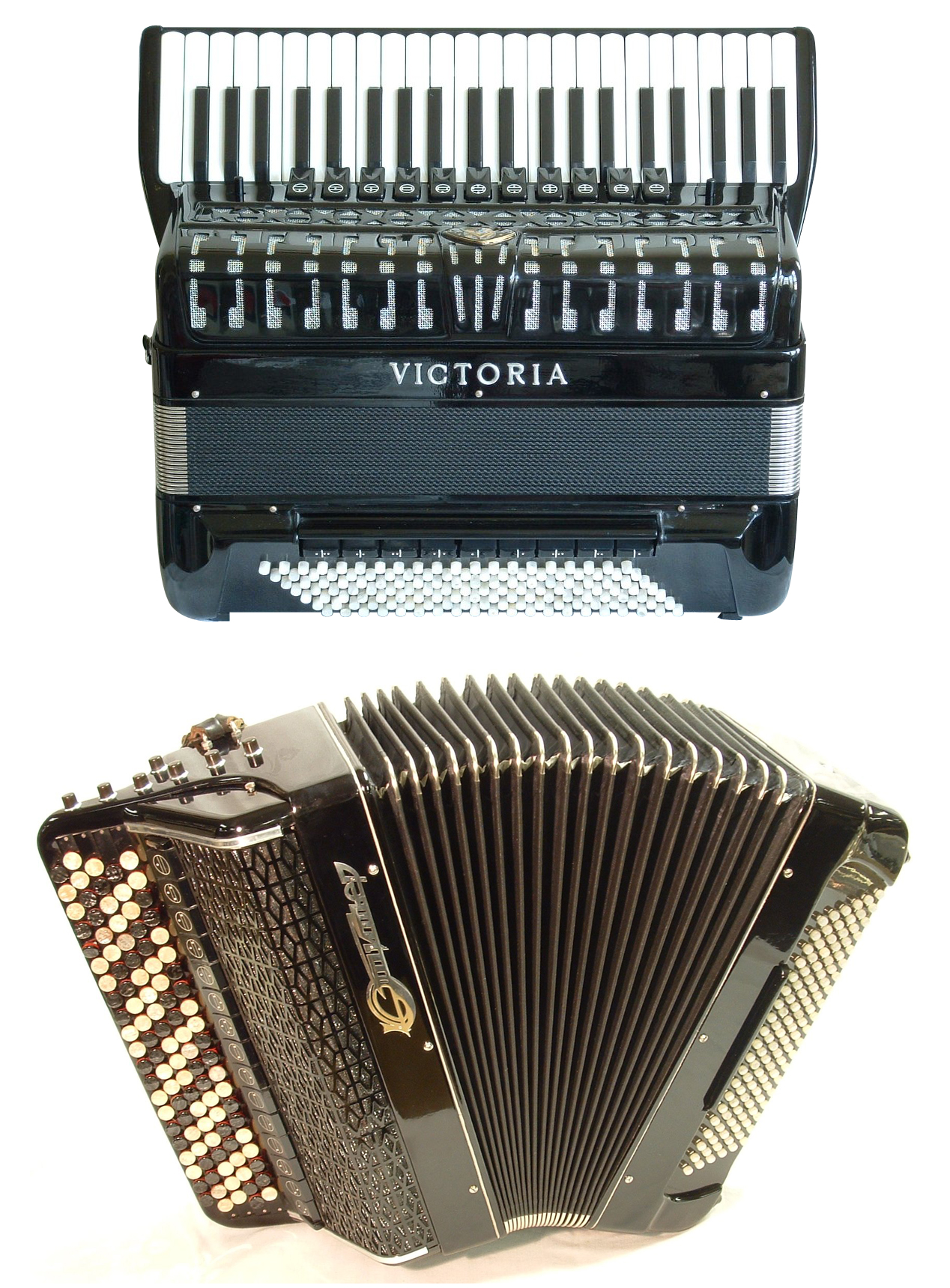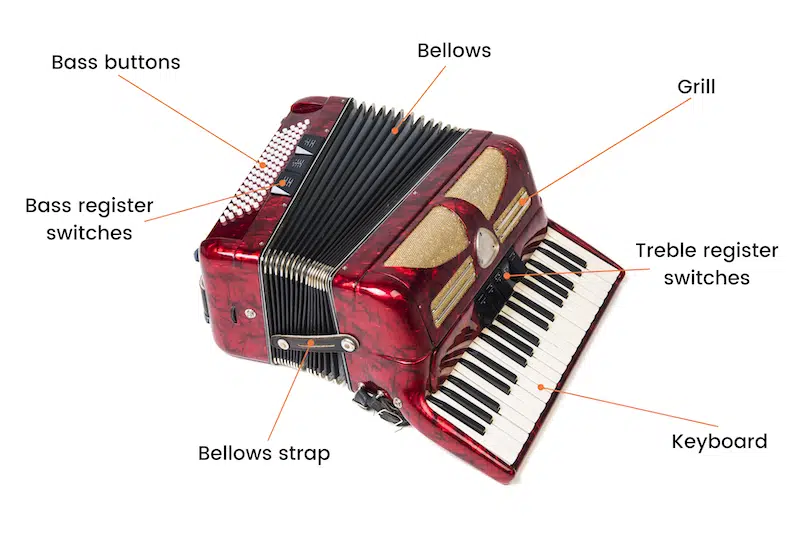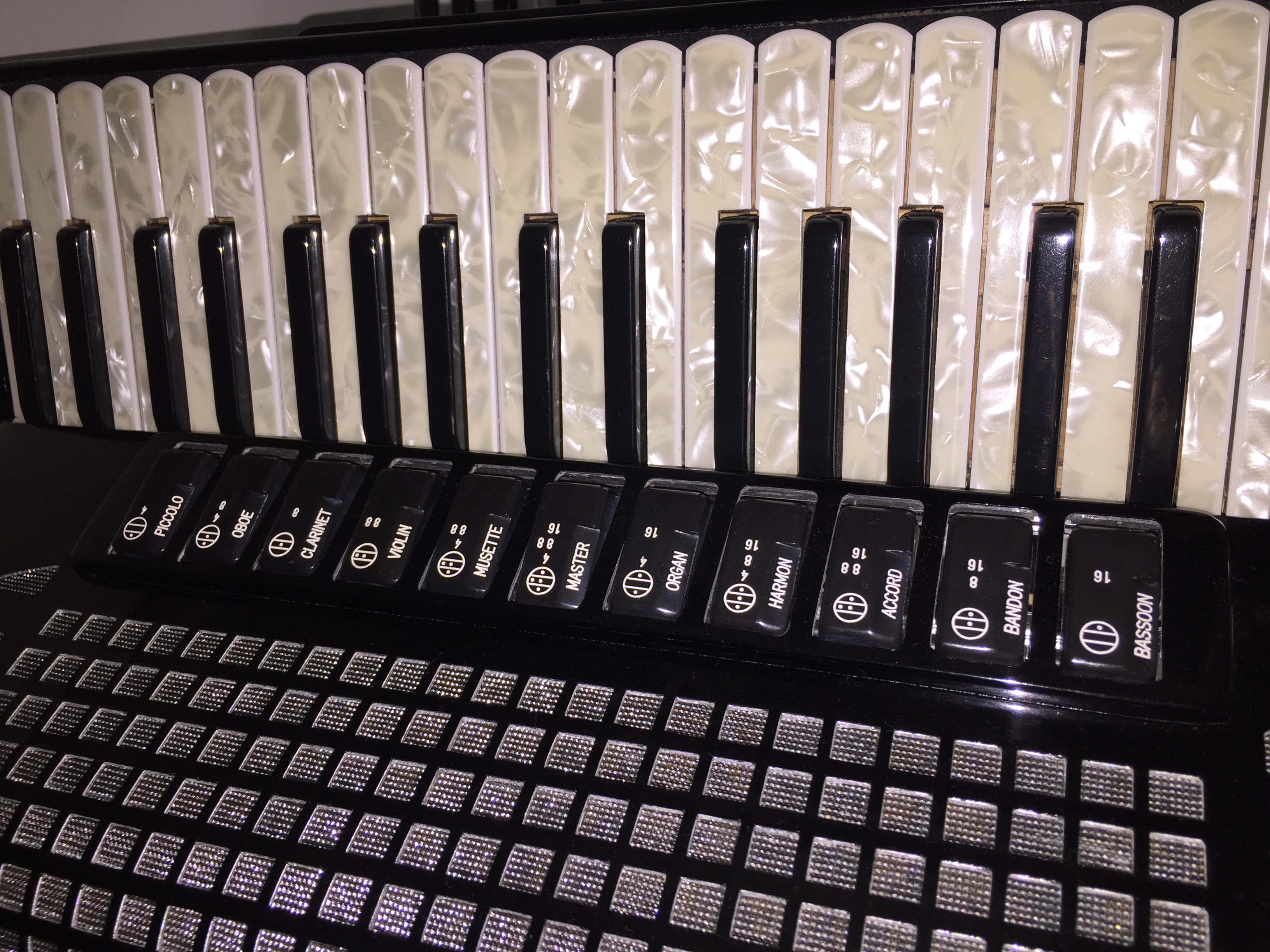This is a brief introduction to the musical instrument accordion, to let you know quickly get what it is and some basic level knowledge.
Types
There are many types of accordions, with the most common being the piano accordion and the button accordion. The main difference between them is in the right hand keyboard: whether it is a piano-style keyboard, or buttons. We talk about the piano accordion in this article.

The button accordion is sometimes referred to as bayan (бая́н), which is a type of chromatic button accordion developed in Russia. Not all button accordions are Bayan, but the term is generally borrowed by the accordion society.
Apart from these, some accordion variants popular in specific regions, such as concertina and bandoneón, are not within the scope of this article. You can explore them if you are interested.
Mechanism

Above is the structural diagram of a piano accordion. The internal mechanical structure of an accordion is highly complex. We will only cover what we need to know to play it.
As the name suggests, an accordion produces sound by using hand movements to drive air. Specifically, it is a reed instrument, where airflow causes reeds to vibrate and generate sound. Inside the accordion, numerous reeds are tuned to different pitches. Each key—whether on the left-hand buttons or the right-hand keyboard—corresponds to a specific reed. Pressing a key opens an air valve to the corresponding reed. When the accordion is pulled or pushed, air enters or exits through the valve, causing the reed to vibrate and produce the corresponding sound. The chamber to store the air is called bellows.
In other words, producing sound in an accordion requires two conditions:
- An air valve must be open (by pressing a key).
- There must be airflow (by pushing or pulling the bellows).
That is to say:
- Simply pressing a key alone does not produce sound because there is no airflow.
- Attempting to move the bellows without pressing any keys does not produce sound as well, because the air valves remain closed.
Do not forcefully push or pull the bellows without pressing a key. Doing so forces open an air valve, which can damage the internal structure of the accordion and cause air leaks.
Besides the left-hand buttons and right-hand keyboard, the accordion also features an air release button located on the upper side of the left-hand button panel. Unlike other keys, this button is not linked to any reed, which allows airflow without producing sound. It is mainly used to silently close the bellows after playing.
How It Is Played
An accordion player plays by alternately pushing and pulling the bellows while pressing keys. Above is a video showing how the accordion is played.
The keys consist of both right hand piano keys (or buttons if it’s a button accordion) and left hand buttons. Each key corresponds to a specific pitch, or musical note.
The right hand keys are in higher pitch usually played for melody, while the left hand buttons are in lower pitch usually played for harmony. The two hands work together to create a full sound. If you want to know what note corresponds to each key, please check my post: Accordion Keyboard Layout and Sheet Music Notation.
The bellows movement controls the volume and dynamics of the sound (because the airflow affects the reed’s vibration). Pushing and pulling create same sound effects.
Timbre
The accordion has its unique sound and can also simulate the timbres of various instruments, such as the flute, piccolo, bassoon, and more. These timbre variations are preset and can be selected using register switches. It is single selection.
The mechanism behind the register switches works by engaging different combinations of reeds within the system, altering the sound by selecting specific reed sets. Both the left and right hand have their own independent register switches for their own sounds, which are located above their respective panel areas.

Purchase Advice
The accordion is an expensive instrument, with entry-level models costing several hundred dollars, while most standard models range from thousands. Be careful if you want to buy your own accordion.
Accordions have various sizes, categorised based on the number of left-hand bass buttons. Common sizes include 48, 60, and 72 bass, with the largest full-size accordion featuring 120 bass. The size of an accordion affects:
- Weight: Larger accordions are heavier. Small one typically weighs 5-7 kg, while large one can be 10-15 kg.
- Right-hand Keyboard: Larger accordions offer a wider playing range.
- Left-hand Bass Buttons: Smaller accordions may lack certain notes and chords, limiting harmonic possibilities in some keys.
- Tone Selection: Larger accordions provide more register options, while very small ones may have only a single tone.
Popular accordion brands include Hohner, Pigini, Bugari, Polverini, Victoria, Roland (digital accordions). Chinese brands like Baile (百乐), Yingwu (鹦鹉), Goldencup (金杯) are generally more affordable but of lower quality compared to imported brands.